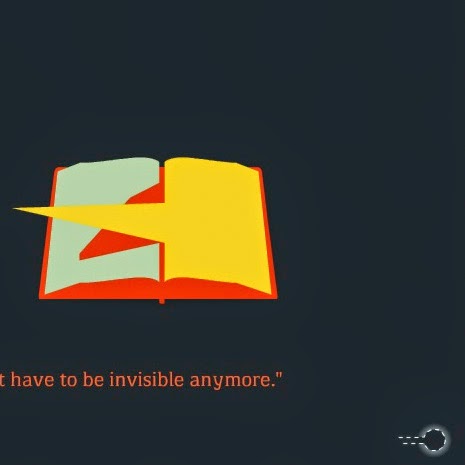↓↓↓
I like reading straightforward linear texts in straightforward linear books page by page in a non-confusing arrangement of thoughts where one idea follows another. Unfortunately, as I look around myself at this very moment I can see two open books to the left, a small pile of photocopied pages to the right, an iPad, a laptop and my notes all annotated, cross-referenced and collated to accompany my re-reading of Katherine’s Hayle’s Writing Machines. My reading, in fact, is an act of multilayered and multicursal pathway of linking, reading, connecting, proceeding. How very appropriate, I suppose.
How cybertextual!
The term cybertext was coined by Espen Aarseth in Cybertext: Perspectives on Ergodic Literature (1997). Regardless of what it sound like, cybertext is not a type of text, it is not a type of link or hypertex (even though hypertext can be present in cybertext) - cybertext is an approach to investigating "communicational strategies of dynamic texts". The term itself is confusing in many ways (no clear definition, broad area of application), one thing is certain, though - it is not media, period or genre specific. It is about communication, interaction, performance within the text and with the text - it is not about literary or visual style.
The concept of cybertext focuses on the mechanical organisation of the text, by positing the intricacies of a medium as an integral part of literary exchange. However, it also centers attention on the consumer, or user, of the text, as a more integrated figure then even reader-responce theorists would claim.
...cybertext is used here to describe a broad textual media category". It is not in itself a literaty genre of any kind Cybertexts share a principle of calculated production, but beyond that there is no obvious unity of aesthetics, thematics, literary history, or even material technology. Cybertext is a perspective I use to describe and explore the communicational strategies of dynamic texts.(Espen Aarseth, Cybertext: Perspectives on Ergodic Literature)
↓↓↓
Here is one of the online i-Ching reading sites 易經.
↓↓↓
Vladimir Nabokov's Pale Fire is another work that Aarseth mentions as a cybertext. Pale Fire consists of a 999-line poem, written by the fictional John Shade, with a foreword and lengthy line-by-line commentary by a neighbor and academic colleague of the poet, Charles Kinbote. Aarseth suggests, that a reader can choose between a linear or non-linear reading of the work, i.e. to read the poem first and then notes as one sequential story; or to keep jumping between the annotations and the poem.
↓↓↓
↓↓↓
This is one more beautifully produced piece of digital art! Hollowbound Book by Erik Loyer is an interactive response to N. Katherine Hayles’ book Writing Machines, in which a newly liberated book binding testifies to its liberation at the hands of Hayles’ theories. It is not a cybertext (for what I understood about cybertexts). However, it can be considered part of cybertext that N. Katherine Hayles’ Writing Machines is - a book that exists as an elegantly designed 3D object (also available as a PDF for a less elegant DIY binding) and an extension of the book Web Supplement, which includes the lexicon linkmap, notes, index, bibliography, errata, and source material. The reader/user can explore alternative mappings of the book's conceptual terrain with additional functionalities unavailable in print, then print insert pages to customize the book itself.
↓↓↓
Children's books - like artist's books - often allow themselves the sort of ingenuity that adult books do not. A few blogposts behind I mentioned Myriorama or tableau polyoptique - a form of cards entertainment that became especially popular in the 19th century: a child was able to arrange and re-arrange the cards into any order to build visual narratives. My own children in their own time could not have enough of Mixed-Up Fairy Tales - a lighthearted contemporary split page book, where a child can make up their own stories using starting lines, names, events from well known fairy tales. It is the book that provided me with hours of piece on the plane - cybertext or not.





